The American National Standards Institute (ANSI) is a non-profit organization devoted to ensuring the health and safety of consumers and the protection of our environment. Working with the
International Safety Equipment Association (ISEA), ANSI developed the accepted standard outlining performance requirements for the visibility of safety apparel -
ANSI/ISEA107-2010. This standard is updated every five years, and specifies how much fluorescent background materials must be used, minimum areas for retro-reflective surfaces, minimum washing cycles and outlines test methods for materials.
1.) What is the difference between Class 1, 2, 3 & E High-Visibility Garments? 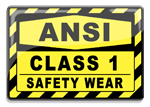
ANSI Class 1 is for moderate and non-severe environments.
These workers are on job sites with vehicular traffic that does
not exceed 25 mph with non-complex backgrounds.
This apparel provides the minimum amount of necessary reflective
striping to differentiate workers from their work environment.
* Carhartt does not offer Class 1 garments.
- Delivery vehicle drivers
- Parking service attendants
- Shopping cart retrievers
- Sidewalk or roadside maintenance workers
- Workers in warehouses with equipment traffic
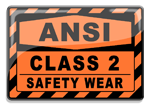
ANSI Class 2 is for moderately severe environments. These
workers are on job sites with traffic that travels over 25 mph with a
complex background. Class 2-certified styles offer a superior visibility
by the additional coverage of the reflective striping on the torso.
- Accident site investigators in less-hazardous situations
- Airport baggage handlers/ground crew
- Emergency respondents in less-hazardous situations
- Forestry workers
- High-volume parking or toll-gate personnel
- Law enforcement personnel
- Parking and toll gate personnel
- Railway workers in less-hazardous environments
- Roadway construction workers in less-hazardous locations
- School crossing guards
- Survey crews near slower-speed traffic
- Utility workers in less-hazardous locations
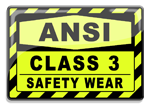
ANSI Class 3 is for use in the most severe environments. These workers
need the highest level of visibility. Class 3-certified styles offer fluorescent
and retro reflective material to the apparel's arms and or legs.
- Accident site investigators
- Emergency respondents
- Railway workers
- Roadway construction personnel and vehicle operators
- Survey crews and flagging crews
- Utility workers
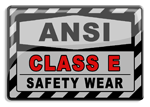
ANSI Class E - This standard applies to pants or shorts that are used
to create a high-visibility ensemble (a complete outfit). When Class E pants
are worn with a Class 2 or Class 3 upper-body garment, the overall
classification is Class 3.
2.) Bright Lime or Bright Orange? Which one and why?
You always want to be as visible as possible when your on the job so do you choose bright lime apparel or bright orange? You may also want to check with your team leader to see if there are any company requirements.
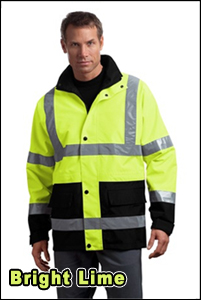 Bright Lime
Bright Lime will best differentiate workers from orange, white, or other colored work vehicles, signs, construction barrels, and other outdoor objects.
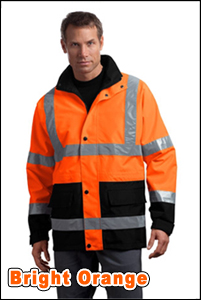 Bright Orange
Bright Orange is recommended for those working in outdoors in order to set objects apart from their surroundings, particularly in complementary contrast to the sky and forested areas, and construction sites.
4.) What is 3M Scotchlite?
3M Scotchlite reflective material uses a technology known as retro-reflection, which helps the eye perceive light during nighttime and low-light conditions. Retro-reflection occurs when light rays are returned directly to the original light source, such as car headlights. Because little light is scattered when the light is returned, retro-reflective materials appear brightest to motorists and vehicle operators.
5.) What is NFPA 70E?
Published by the National Fire Protection Association,
NFPA 70E is the Standard for Electrical Safety in the Workplace. This standard requires employees to wear flame resistant clothing wherever there is a possible exposure to electric arc flash. NPFA 70 E is widely accepted throughout general manufacturing and electrical industries. NFPA 70E is a voluntary consensus standard, not a law. However, the U.S. Occupational Safety and Health Administration (also known as OSHA) recognizes NFPA 70E as a generally accepted industry practice and has referenced it in citations.
6.) What is an HRC?

HRC is the hazard risk category rating for any FR (Flame Resistant)
clothing that indicates the level of protection the garment provides.
There are five HRCs ranging from 0 to 4, with an HRC of 0 representing
the least amount of protection, and an HRC of 4 representing the most
protection. The NFPA 70E consensus standard assigns these categories
based on the electrical maintenance task to be performed, and each HRC
correlates to a specific range of ATPVs.
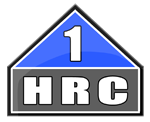
Garment with HRC 1 Protection has Hazard Risk Category with minimum
ATPV of 4 cal/cm2, but less than 8 cal/cm2.
Common FR clothing with this level of protection includes: FR shirts, pants, coveralls, and single base layer of FR protection.
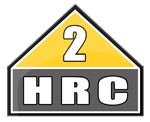
Garment with HRC 2 Protection has Hazard Risk Category with minimum
ATPV of 8 cal/cm2, but less than 25 cal/cm2.
Common FR clothing with this level of protection includes: FR under garments (undershirt, underwear), shirts, coveralls, and 2 or more layers of FR protection garments.
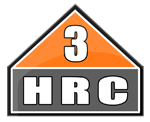
Garment with HRC 3 Protection has Hazard Risk Category with minimum
ATPV of 25cal/cm2, but less than 40 cal/cm2.
Common FR clothing with this level of protection includes: FR under garments (undershirt, underwear), shirts, coveralls, and 2 or more layers of FR protection garments.

Garment with HRC 4 Protection has Hazard Risk Category with minimum
ATPV of 40 cal/cm2.
Common FR clothing with this level of protection includes: FR under garments (undershirt, underwear), FR shirts, jackets/coats, pants, coveralls, multi-layer
flash suit, and 3-4 or more layers of FR protection garments.
7.) What is NESC?
The
Nation electrical Safety Code (NESC) is the standard for the safety of employees in the electric utility
industry. Although not a law, NESC is a voluntary consensus standard and the standard OSHA cites when enforcing electrical safety in the utility industry.
8.) What is NFPA 2112?
NFPA 2112 is the standard for flame resistant garments for protection of industrial personnel against flash
fire, and is published by the national fire protection association (NFPA). The standard is targeted towards
workers who are at risk of flash fires, primarily in the petrochemical industries. NFPA 2112 is a voluntary consensus standard and not a law. However, OSHA recognizes NFPA 2112 as a generally accepted industry practice.
9.) What is an ATPV?
An
Arc Thermal Performance value (ATPV) is a rating assigned to flame resistant clothing indicating the
level of protection provided. Higher weight (thicker, or more dense) fabrics typically have higher ATPVs and
provide increased protection (as does the layering of FR clothing).